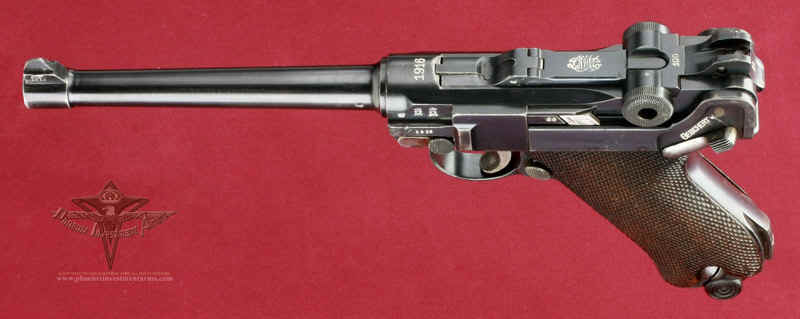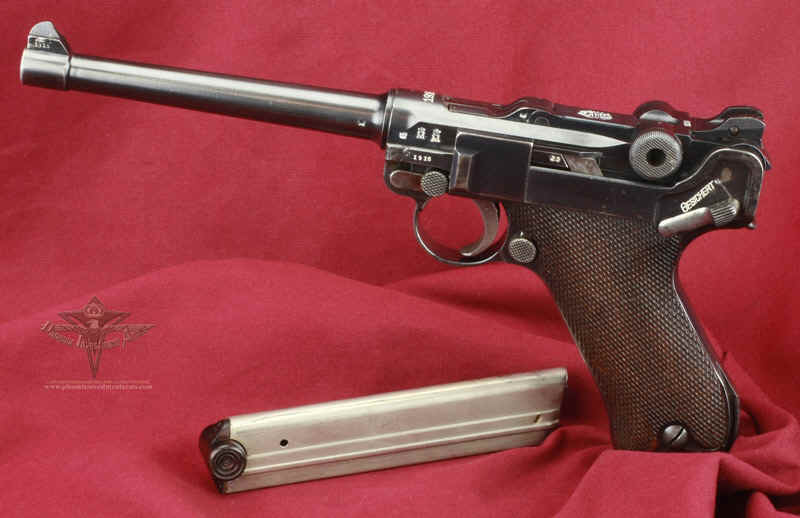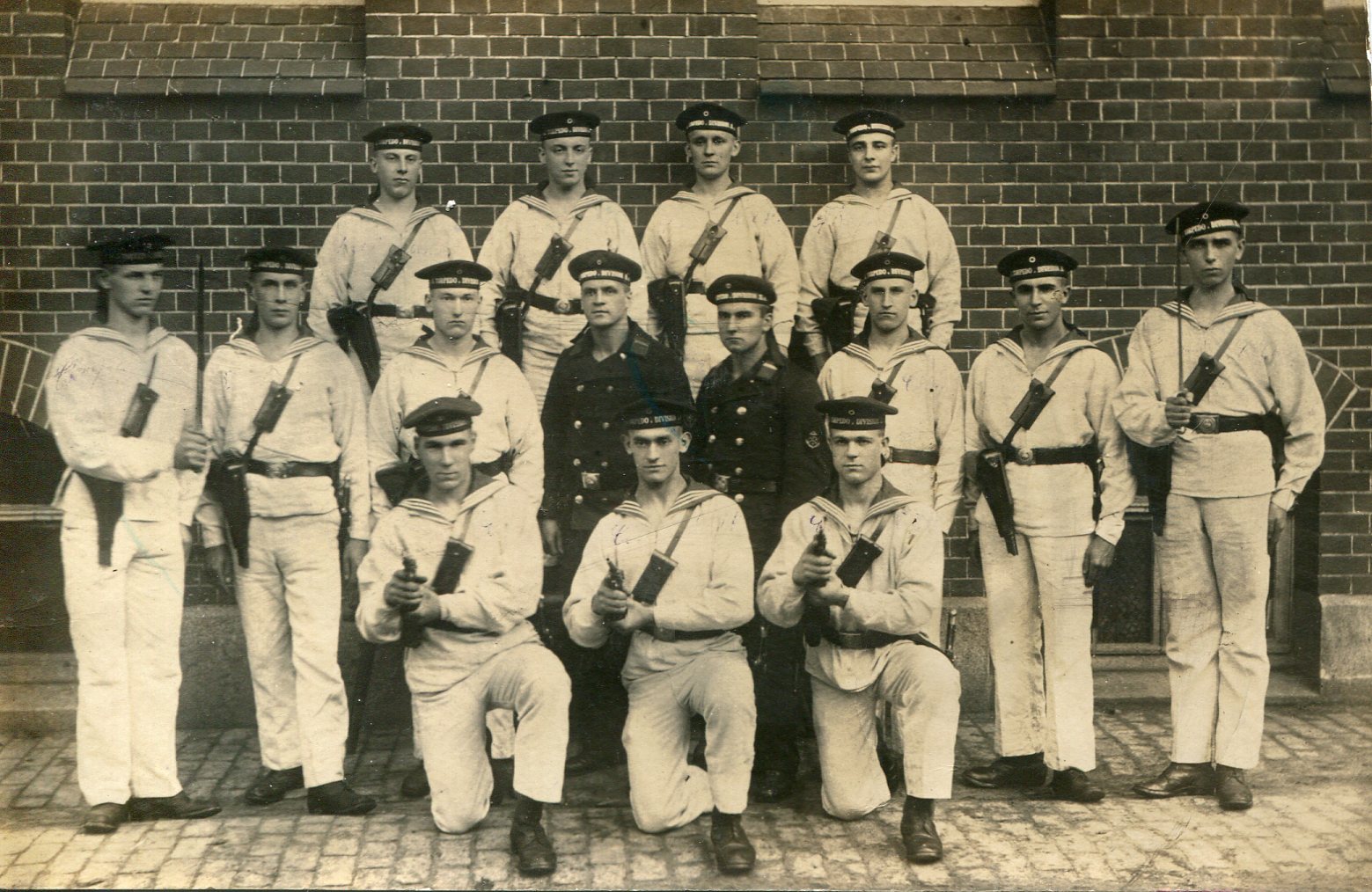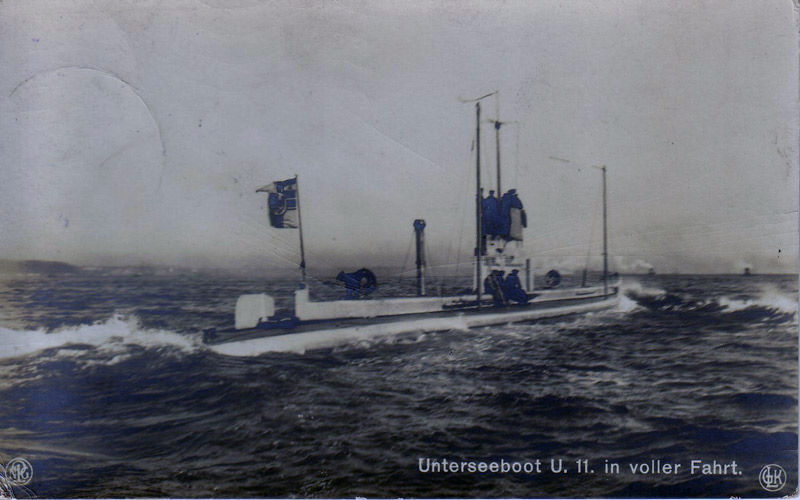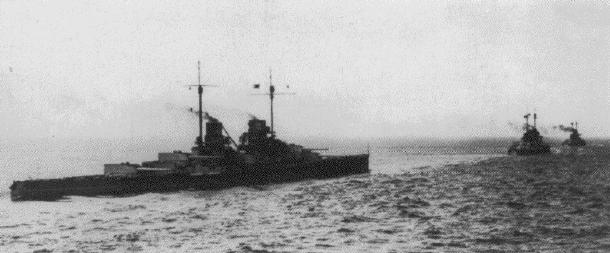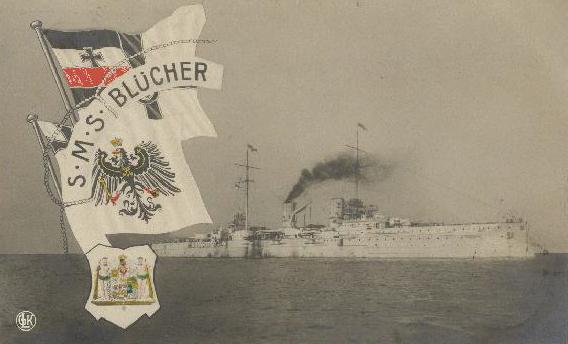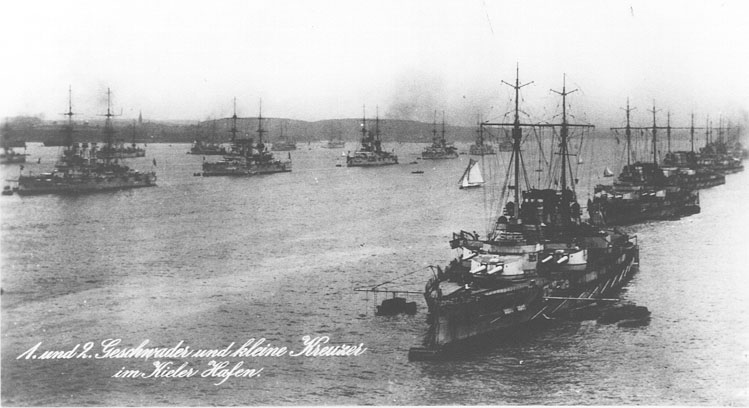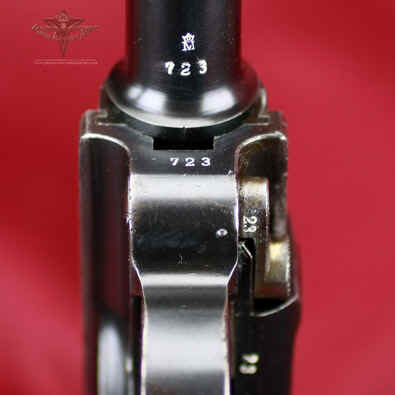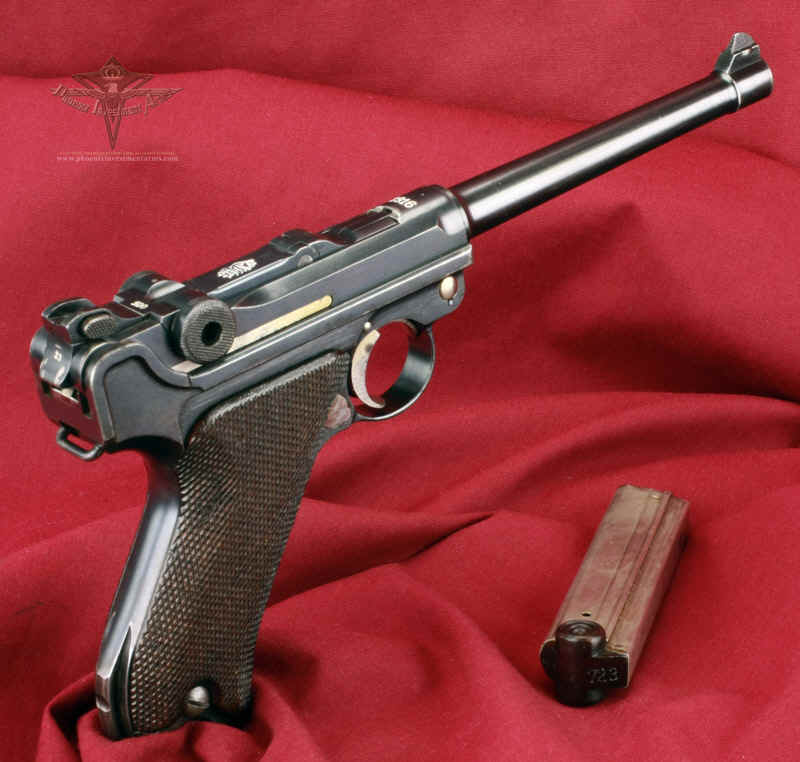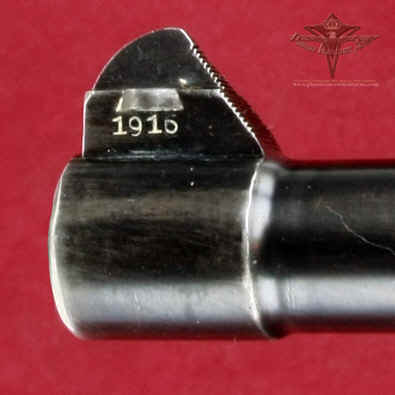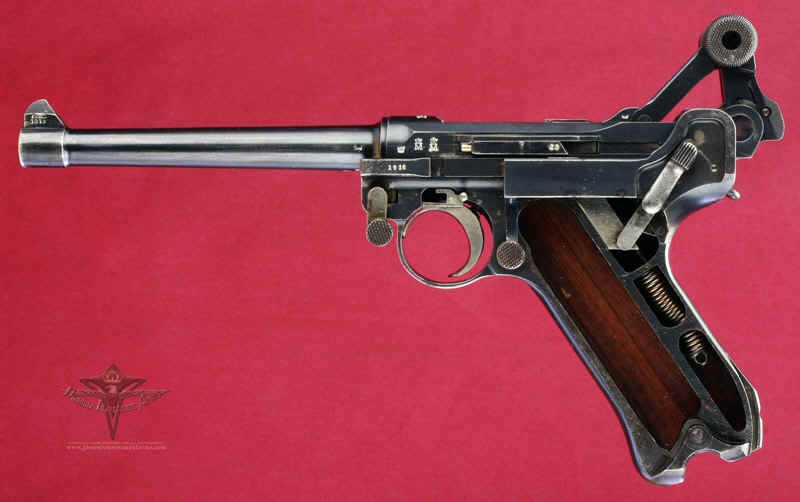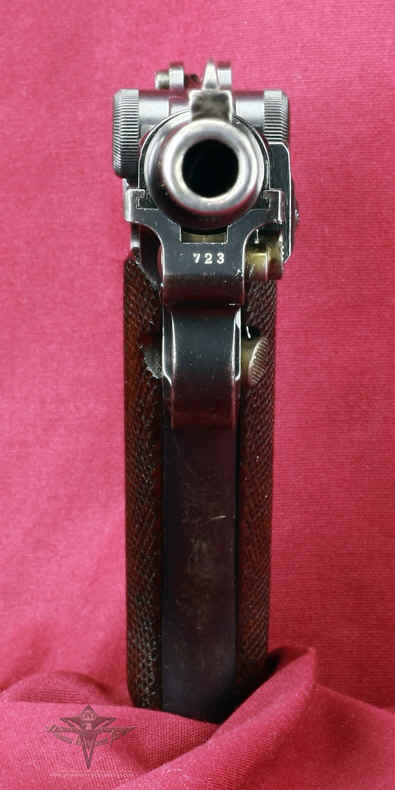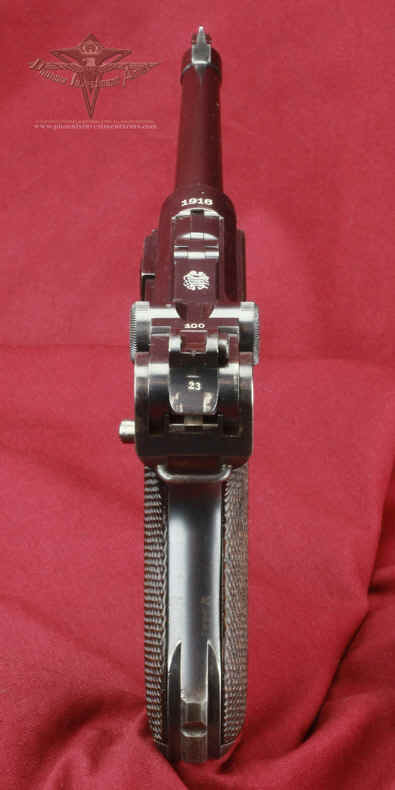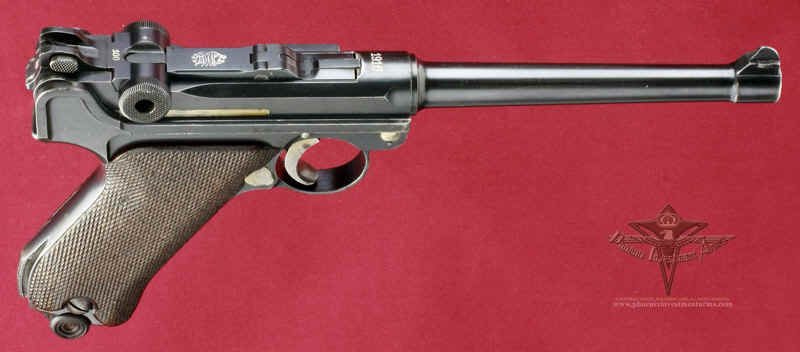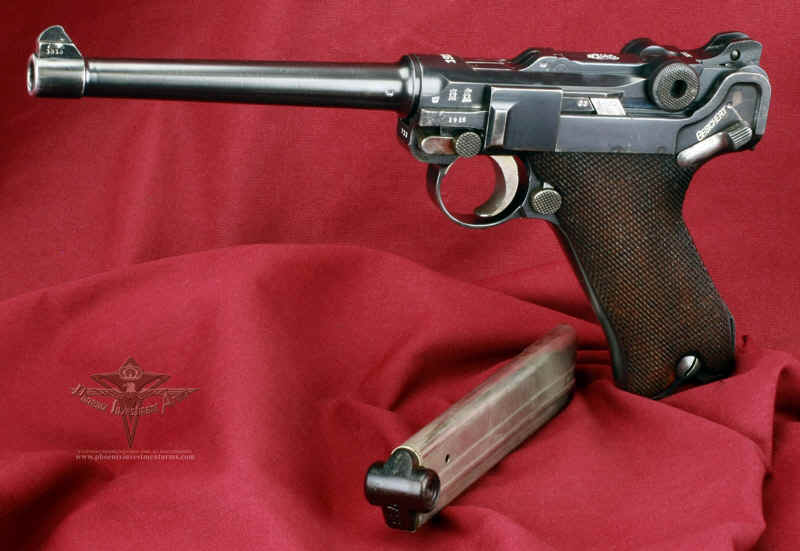|
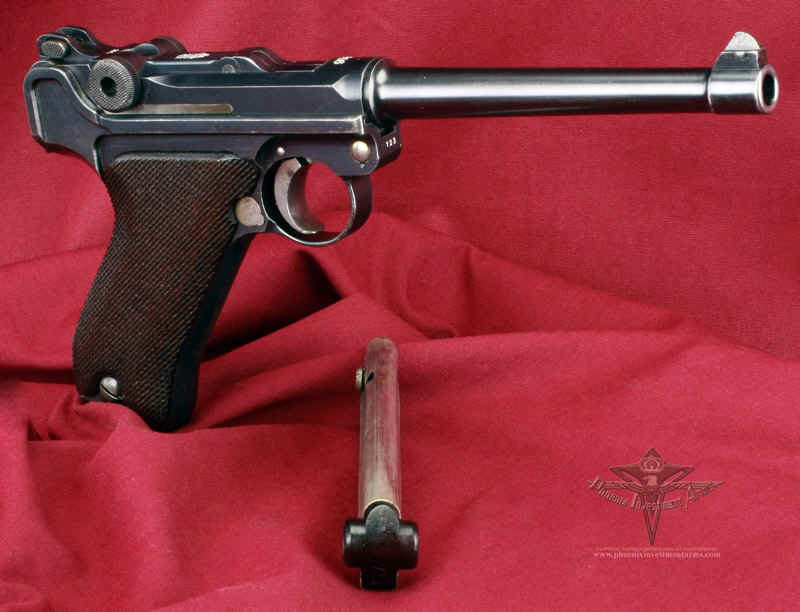 |
|
NOTE: Photographs taken today
with the high mega-pixel camera show more than we sometimes can see with
the human eye. Magnified close-ups show us tool marks and natural
surface conditions that one normally doesn't see in the ordinary
handling of the weapon. Photographs are
Copyrighted, all rights reserved, any extraction, reproduction or
display of gun pictures without the express consent of the Phoenix
Investment Arms is strictly prohibited. Thank you for your cooperation.
See Legal for the terms of sale for all Lugers. |
|
|
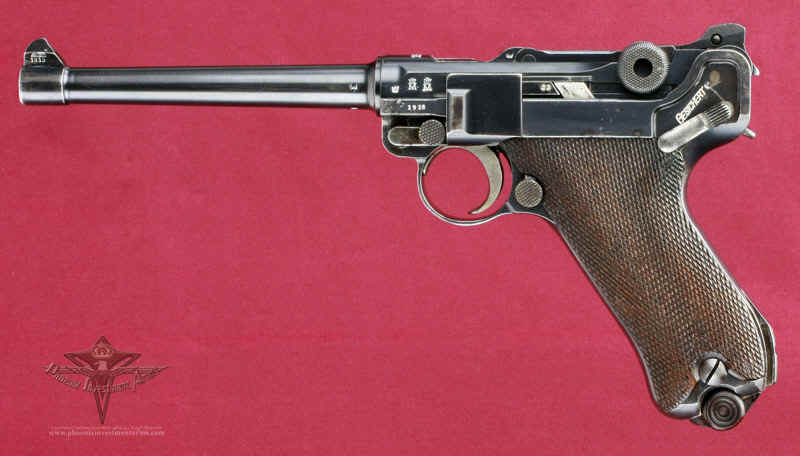 |
|
This Navy is
the classic; complete with matching magazine.
The
finish shows honest wear and would be rated excellent for an Imperial
Navy. This
model has a hold open latch and stock lug.
|
|
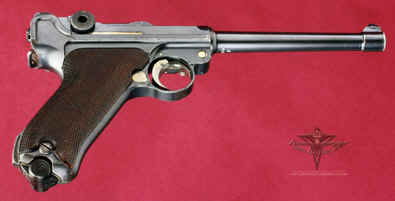 |
 |
|
Serial number placement is in the commercial ("hidden") style.
The serial number appears on the front of the frame, on the bottom of the
locking bolt, on the trigger, on the bottom of the barrel, the side plate,
the left side of the receiver, and under the first toggle. These are
characteristic of the Navy. |
|
 |
|
The 1916 Navy has the thumb
safety and a stock lug. This Luger has
all matching numbers. There are many theories as to why the
rings on the Navy magazines; 7.65 - vs. - 9mm, to separate the magazines for accountability. In any
case it makes it easy to identify a Navy.
|
|
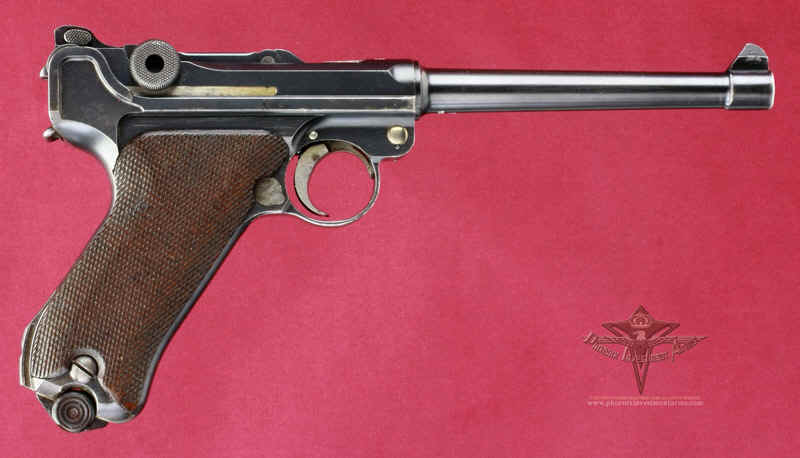 |
|
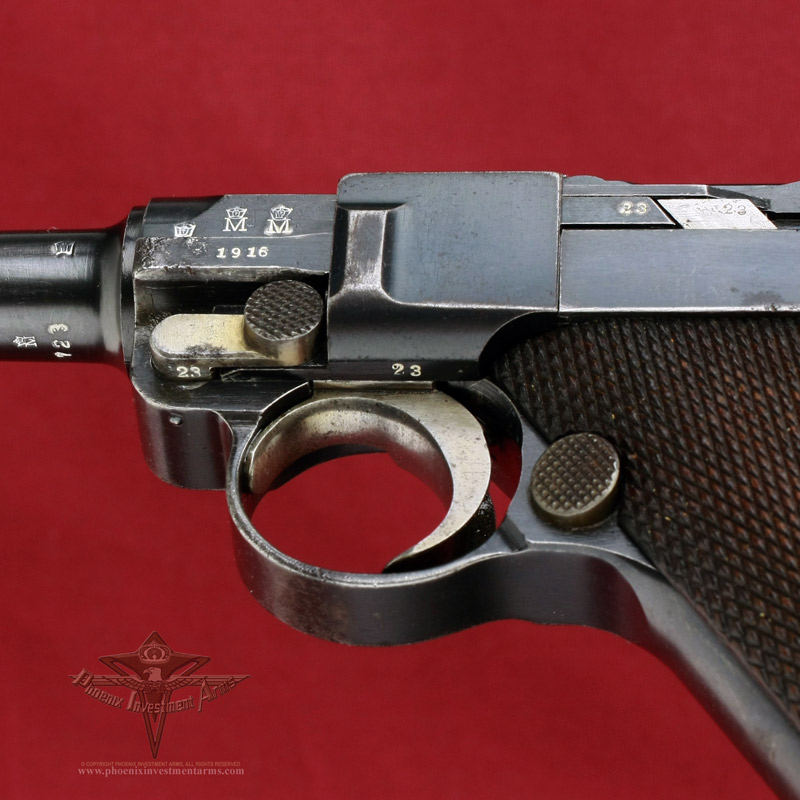 |
|
Navy Models were marked on the bottom of
the side plate and locking lever as they did with the commercial
models. Both the sear and safety stop are marked with the last two
digits of the serial number. |
|
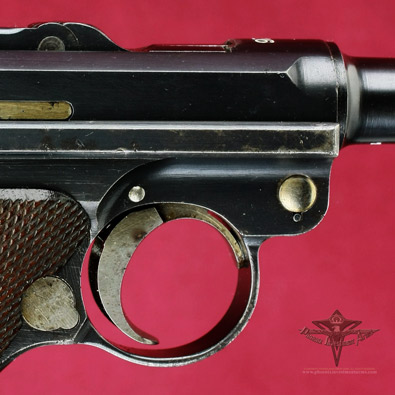
|
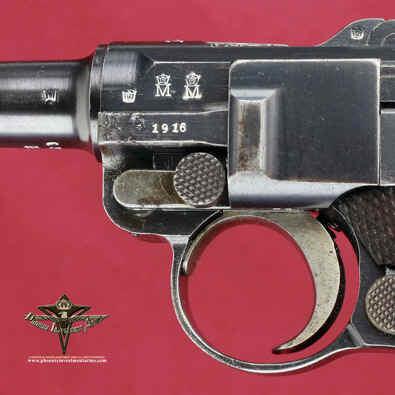 |
|
The proofing on the "Navy Model" has always
been distinctive with the Crown M for Imperial Marinen, the small date
on the muzzle and side rail of the frame and the Crown acceptance proof.
|
|
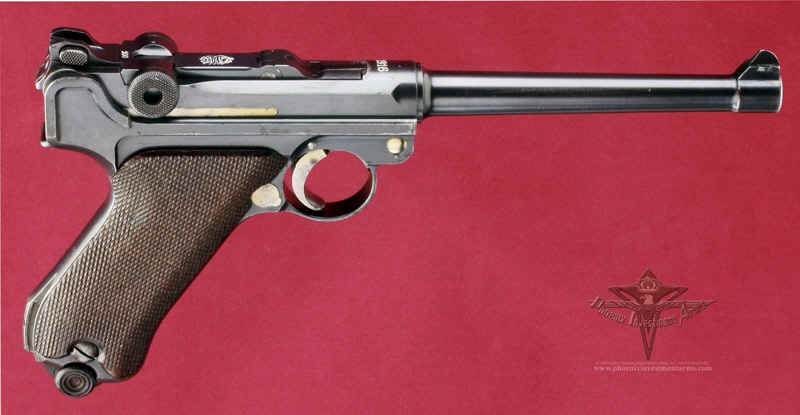 |
